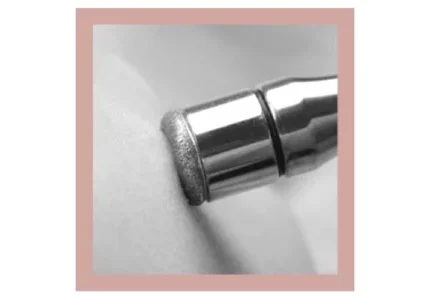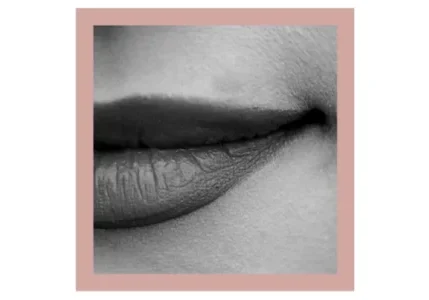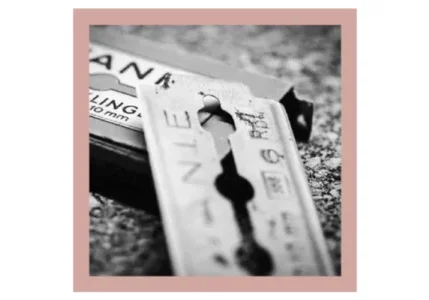Recommended Sugaring Hair Length

Another common technique to remove unwanted hair on the body and face is sugaring. Sugaring is a method of hair removal that involves using a sticky paste made of sugar, lemon juice, and water to remove unwanted hair from the root. The paste is applied to the skin and then removed, taking the hair along with it.
Sugaring hair removal is not new. The practice originated in ancient Egypt. This method was later used by Persian woman. That is why the hair removal procedure is also called a “Persian”. Sugaring at that time had excellent results.
The effectiveness of your sugaring will depend on various factors. First, psychological preparation for the procedure is essential. With a negative mood, pain in the process of sugaring can increase. Experts recommend not thinking about the pain during a hair removal session, but rather focus on the results. Many patients also experience discomfort due to embarrassment about having the procedure done on various intimate zones.
Also, the importance of high-quality paste, a well-developed technique and a steady hand are all important factors for successful hair removal with sugaring. The sugar paste is applied in the opposite direction of hair growth. Using sugar paste does not only eliminate hair but has beneficial substances that penetrate the skin and exfoliate keratinized cells. Thus, the skin becomes velvety and smooth.
Another important factor to the process is the length of the hair in the area of the body that you are going to have waxed. Regular customers know how much to grow their hair for sugaring. But beginners often come to the spa unprepared, with hair that is too short or too long.
This article will explain how hair length affects the quality of hair removal and which zones of the body hair length does not affect.
Sugar waxing considerations
A thick sugar paste sticks to the skin and hair on it, forming a strong bond. For high-quality hair removal, the bond must be so strong that at the time of tearing off the paste, the mixture is removed along with all the hairs and their roots. Sugaring is more effective if the paste securely grabs each hair and removes it along with the root. The paste can be applied to the area 2-3 times in order to remove any remaining stubborn hair.
What three factors will improve adhesion of the paste on your hair?
- Choosing the right paste density depending on the technique.
- The hair in the area that is going to be removed needs to be absolutely dry.
- The optimal hair length is needed.
Therefore, before the procedure begins, the esthetician will examine the treatment area and assess the length of the hair, their hair type and direction it is growing. They will then determine the right technique and sugar paste needed for the treatment. These factors will determine how smooth the area will be left after the waxing. Even with the optimal hair length, not all hairs lend themselves well to removal with sugaring paste.
Here are some common types of hairs and how they might react to sugaring:
- Vellus (peach fuzz) - The thin, soft, and usually colorless or light-colored hair that grows on certain areas of the body. Usual paste slides right off from these types of hairs. For peach fuzz a special sugar products are used to increase adhesion.
- Terminal - This hair is a type of hair that is thicker, coarser, and darker in color compared to vellus hair or peach fuzz. It is the type of hair that typically grows on the scalp, eyebrows, eyelashes, and pubic area, underarms and legs. These hairs are easy to remove when choosing the right technique and paste.
- Intermediate - This type of hair is a cross between terminal and fluffy hair, they cover mainly legs and arms, are well removed by manual methods and correct sugar paste density.
VISIT ANNAZUR ORGANIC SPA
Should I Trim Before Sugaring?
One or two days before the procedure, it is recommended to cleanse the skin using a mild scrub. This removes the thin top layer of dead cells and will help the sugar paste penetrate much deeper into the follicle and remove it more efficiently. On the day of sugaring, you should not apply any cosmetics to the are that will be waxed.
Depending on the specific area, the optimal hair length may vary. But experts have calculated the range in which hair removal will be successful. For sugar waxing, the ideal length is 1/16 inch (3mm) - 1/4 inch (7mm) - This length allows the sugar wax to effectively grip the hair for removal. If the hair is too short, the wax may not be able to adhere properly, and if the hair is too long, it can make the waxing process more painful. Therefore, it is recommended to trim your hair to the appropriate length before undergoing a sugar waxing session.
Remember, if hair is too short then the paste does not adhere well to them. The adhesion is insufficient to pull the root together with the follicles. When hair is too short sometimes it is necessary to apply the paste several times on the same area, which can irritate the skin. The procedure will take more time, and the result will be unsatisfactory. Of course, no one wants to walk around with overgrown hair on their legs and armpits. However, you will have to wait until the hairs have reached their optimal length.
Also, if hair is too long they become entangled when applying paste and can affect the skin in neighboring areas. As a result, the procedure might be more painful than usual. If unwanted hair adheres to the paste it can cause ingrown hairs due to breaking off at the root and inflammation. Hair that is too long before the procedure should be trimmed.
Can I Get Sugared While On my Period?
Having your period should not interfere with the sugaring process or pose any significant risks. However, it's important to communicate with your esthetician or the person performing the sugaring treatment and let them know that you are on your period. This is because some individuals may experience increased sensitivity or discomfort during their menstrual cycle, and the esthetician can take that into consideration during the treatment.
Additionally, it's worth noting that some people may be more sensitive to pain during their period due to hormonal changes. Usually by the 3rd day of menstruation, the pain threshold is at it’s highest. If you typically experience heightened sensitivity or discomfort during your menstrual cycle, you might want to take that into account when deciding whether or not to have a sugaring treatment at that time. Ultimately, it's a personal decision, and you should choose what feels most comfortable for you.
IMPORTANT! → WHEN PERFORMING TREATMENT ON CRITICAL DAYS, PREPARATION INVOLVES THE USE OF HYGIENIC TAMPONS.
How Long Does Sugaring Last?
On average, sugaring lasts for about 2-4 weeks. The speed of new hair regrowth largely depends on the correct technique of the esthetician. When the follicle is properly removed, the speed of new hair regrowth slows down. Another important factor to how long sugaring lasts is nutrition. If more than 50% of your diet is protein, then hair regrows quicker and you will have to undergo sugaring more often.
Shaving after sugaring, especially legs and arms, is not recommended. The main side effect after shaving is the appearance of hard "shaved" hairs. If you constantly shave, the hairs will roughen and minimize the smoothness of the waxing. This also leads to the sugaring procedure becoming more painful in subsequent sessions.
Sugar wax after care
After sugar waxing, the skin may experience temporary redness, sensitivity, or minor irritation. Applying a moisturizer helps soothe the skin, provide hydration, and promote faster recovery. On the first day after sugaring, it is recommended to apply moisturizing creams to the skin that have a sedative effect.
Also, skin care involves following this plan:
- Disinfection of epilated areas. Bactericidal preparations are used - Miramistin solution, Chlorhexidine, or 3% hydrogen peroxide.
- Antiseptic drugs can be used that have a cooling, regenerating and anti-inflammatory properties.
- Moisturizing. The use of light creams, which contain allantoin, are recommended. They must have good absorbency.
- Scrubs. This involves the use of almond oil-salt, or salt scrub. Refrain from using abrasive scrubs, loofahs, or exfoliating products on the waxed area for a few days. Exfoliation to harshly can further irritate the skin and increase the risk of ingrown hairs.
- The use of hair growth inhibitors. Such agents have an effect on the embryonic zone of the follicle and contribute to inhibition of the rate of cell division.
Contraindications to waxing treatments
The effectiveness of sugaring with minimal pain is possible when proper techniques are used during the treatment. Sugaring, for example on legs and thighs, cannot be done when you have deep vein thrombosis. It's typically recommended to avoid waxing over these veins, as it can potentially aggravate the condition or cause further complications. Other contraindications for sugaring are neurodermatitis; eczema, and psoriasis. For people suffering from varicose veins, as well as pregnant women, sugar depilation is done only with permission from a doctor.
In summary, before choosing sugaring as a method of hair removal, you should carefully consider these possible contraindications to the procedure:
- Varicose veins
- Diabetes
- Damage of the integrity of the skin
- Pustular skin lesion
- Intolerance to citric acid or sugar
Benefits of Sugaring at ANNAZUR Spa
The effect of sugaring hair removal can be compared with the results of a wax procedure. However, sugaring is considered less painful, and the smoothness of the skin after it can last much longer than a normal waxing. A Sugaring session can take an average of 30 minutes. This can vary depending on individual factors. Depending on the volume of the working area the treatment may take up to an hour.
The main advantages of sugaring are as follows:
- The procedure is gentler than other waxing methods. The upper layer of the skin isn’t harmed. There is no need to heat up paste during this procedure which avoids the expansion of blood vessels and possible burns. The skin remains smoother for longer and irritation is minimized.
- Sugar paste is able to penetrate down to the hair follicle, enabling better hair removal. In this case, sugaring can be performed with a minimum hair length of 1/16 inches (3 mm).
- Sugaring can help reduce the occurrence of ingrown hairs. The gentle nature of sugaring and the fact that the paste is applied in the direction of hair growth can minimize the likelihood of hairs curling back and becoming trapped beneath the skin.
- Sugaring waxing is a more environmentally friendly option compared to traditional waxing, as it does not involve the use of disposable wax strips.
- Sugaring paste is typically made from natural ingredients such as sugar, lemon juice, and water. This makes it a preferable option for those with sensitive skin or allergies to the chemicals commonly found in traditional waxing products.
- Using sugaring, the smoothness of the skin can last up to 1 month. The sugaring procedure does not damage living cells, but at the same time effectively gets rid of dead particles. This, in turn, leads to a general improvement in the condition of the skin.








